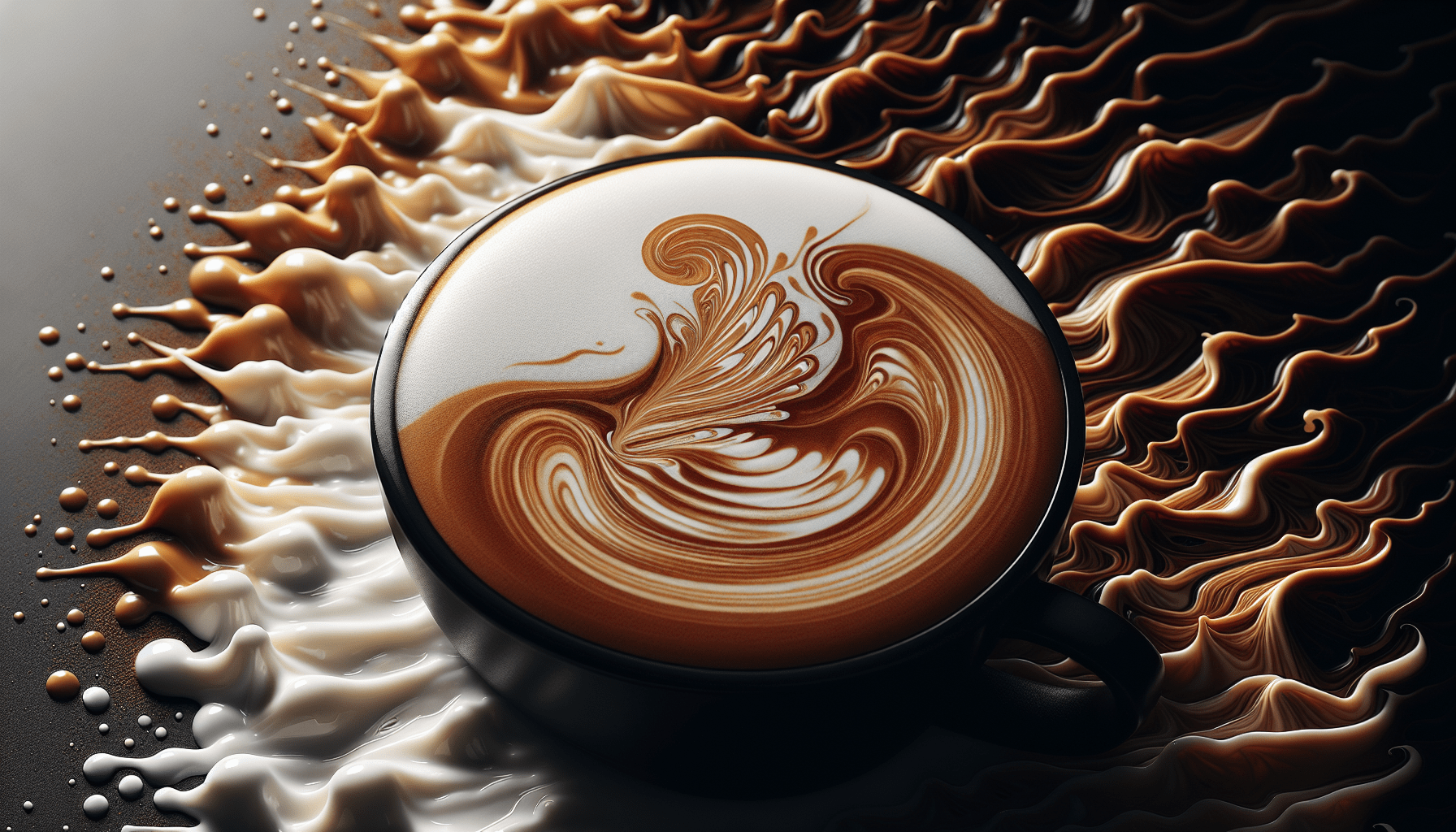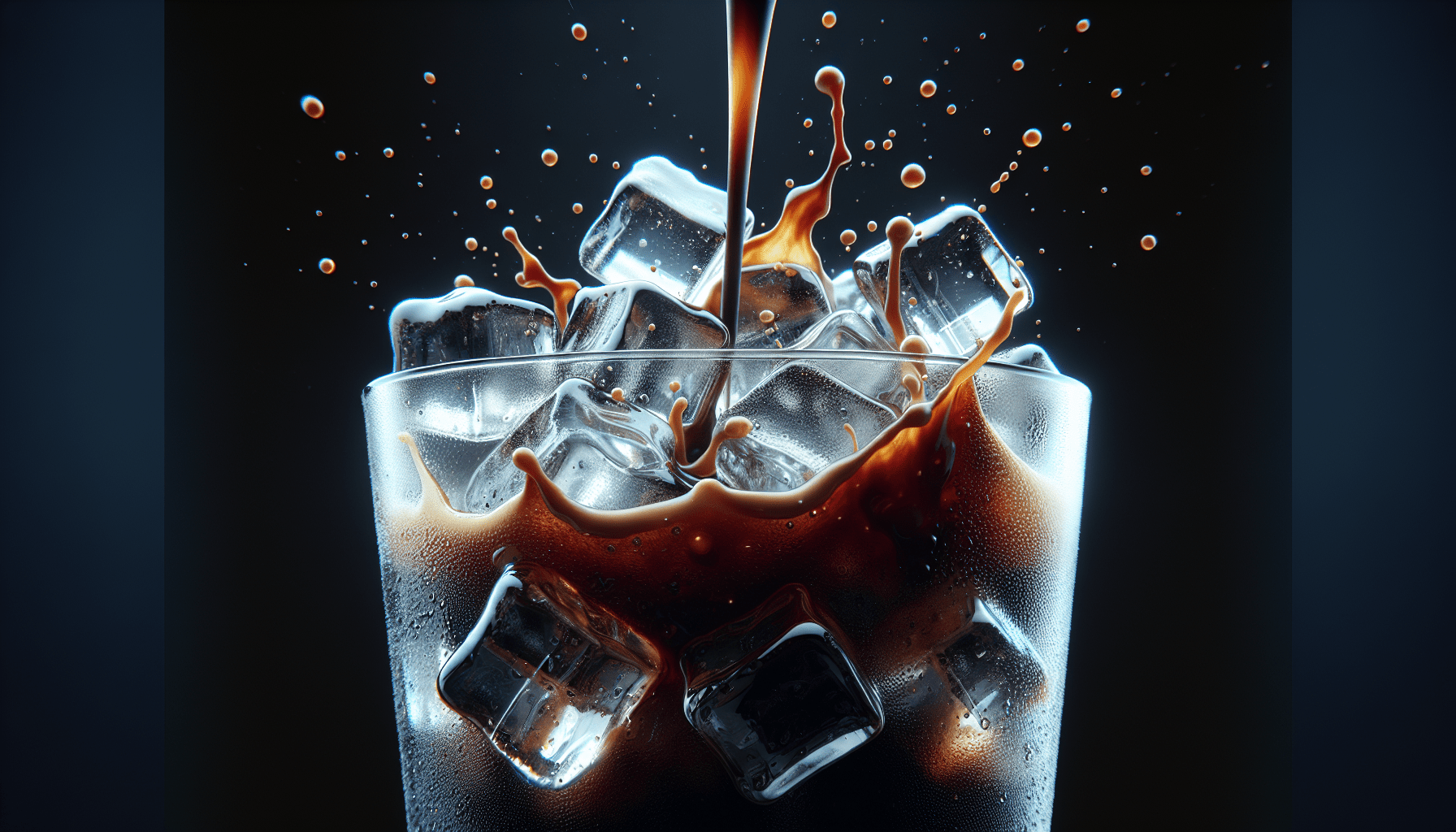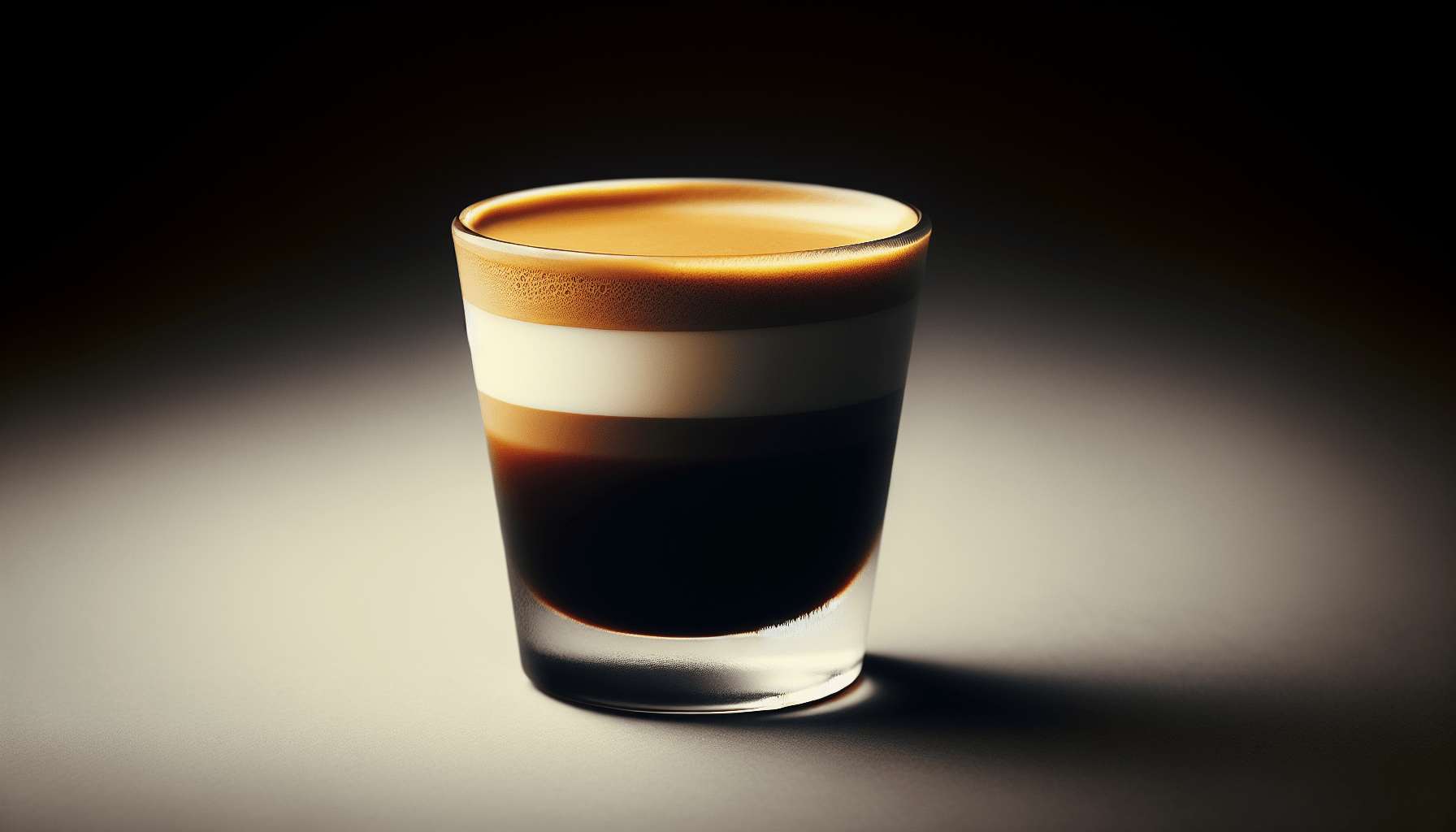Imagine starting your day with a creamy, frothy cup of Latte, a beloved espresso-based beverage that has captivated coffee lovers all over the world. With its rich flavor and velvety texture, Latte offers a delightful balance between the robustness of a shot of espresso and the silky smoothness of steamed milk. Whether you savor it in the comfort of your own home or indulge in it at a cozy café, Latte is the perfect companion to kickstart your mornings or satisfy your midday cravings. Discover the irresistible allure of Latte and embark on a journey of pure coffee bliss.
History of Latte
Origin of Latte
The latte, also known as caffè latte, originated in Italy. The word “latte” in Italian simply means “milk.” The early version of the latte was believed to have been created in the 17th century in cafes across Europe, where coffee was mixed with milk to create a creamy and mellow beverage.
Latte in Italy
In Italy, the birthplace of the latte, it was traditionally referred to as “caffè latte.” Italians would enjoy a caffè latte in the morning as a breakfast beverage. It was often accompanied by a pastry or biscotti. In Italy, the preparation of a latte involves pouring a shot of espresso into a cup and then adding steamed milk, creating a balanced ratio of coffee to milk.
Popularity of Latte Worldwide
The latte gained widespread popularity beyond Italy in the 20th century. It became especially popular in the United States, where it became a staple in coffee shops across the country. The rise of coffee chains and the increasing interest in specialty coffee contributed to the latte’s global popularity. Today, latte is one of the most commonly ordered coffee beverages worldwide.
Ingredients of a Latte
Espresso
The foundation of a latte is a shot of espresso. Espresso is a concentrated form of coffee that is brewed under high pressure, resulting in a rich and flavorful base for the latte. It provides the strong coffee flavor that is distinct to a latte.
Steamed Milk
Steamed milk is a crucial component of a latte. It is prepared by heating milk to create a velvety and smooth texture. The steamed milk is poured into the espresso, creating the signature creamy consistency of a latte.
Foam
Foam is another element that distinguishes a latte from other coffee beverages. It is created by incorporating air into the steamed milk, resulting in a layer of frothy foam on top of the latte. The foam adds a visually appealing touch to the latte and enhances its overall texture.
Optional Flavors
One of the many pleasures of a latte is the ability to personalize it with various flavors. Popular options include vanilla, caramel, mocha, and matcha. These flavors can be added to the latte either by using flavored syrups or by incorporating the flavor directly into the brewed espresso.
Different Types of Lattes
Traditional Latte
The traditional latte is the classic version of the latte, consisting of a shot of espresso, steamed milk, and a layer of creamy foam on top. It provides a balanced combination of coffee and milk flavors and is often enjoyed as a morning or afternoon pick-me-up.
Mocha Latte
The mocha latte is a delightful blend of coffee and chocolate. In addition to the usual latte ingredients, it includes chocolate syrup or powder. The result is a rich and indulgent beverage that appeals to those with a sweet tooth.
Caramel Latte
For those who enjoy the sweet and buttery flavor of caramel, the caramel latte is an excellent choice. It features the addition of caramel syrup, which adds a distinct and luscious taste to the classic latte.
Vanilla Latte
The vanilla latte is a popular choice among latte enthusiasts. It incorporates the smooth and fragrant flavor of vanilla syrup, enhancing the overall taste experience. The subtle sweetness of vanilla complements the coffee and milk flavors harmoniously.
Matcha Latte
The matcha latte offers a unique and vibrant twist to the traditional latte. Matcha, a finely ground powdered green tea, is mixed with the steamed milk and espresso shot. The result is a vibrant green latte with a slightly earthy and sweet taste profile.
Health Benefits of Lattes
Source of Energy
Lattes provide a significant energy boost, thanks to the combination of espresso and milk. The caffeine in espresso stimulates the central nervous system, improving mental alertness and reducing fatigue. The presence of milk adds carbohydrates to the beverage, providing a quick source of energy.
Calcium Intake
Milk is an excellent source of calcium, and lattes offer a convenient way to increase your calcium intake. Calcium is essential for bone health, ensuring the strength and density of bones. Regular consumption of lattes can contribute to meeting the recommended daily calcium intake.
Antioxidant Properties
Coffee contains antioxidants, which are beneficial compounds that protect the body from damage caused by harmful molecules called free radicals. Regular consumption of lattes can contribute to the overall antioxidant intake, promoting health and well-being.
Improves Mood
The combination of caffeine and milk in lattes has been linked to mood enhancement. The caffeine stimulates the release of neurotransmitters in the brain, such as dopamine and serotonin, which are associated with improved mood and feelings of happiness.
How to Make a Latte at Home
Gather Equipment
To make a latte at home, you will need an espresso machine or a moka pot to brew espresso, a milk frother or steam wand for steaming milk, and a cup to serve your latte.
Prepare Espresso
Brew a shot of espresso using your espresso machine or moka pot according to the manufacturer’s instructions. The espresso should be strong and flavorful, serving as the base of your latte.
Steam the Milk
Pour cold milk into a frothing pitcher and position the steam wand or milk frother just below the surface of the milk. Turn on the steam wand or frother and slowly bring it closer to the surface, creating a whirlpool-like motion with the milk. Continue steaming until the milk reaches a smooth and creamy consistency with a velvety texture.
Pour the Milk and Espresso
Pour the steamed milk into a cup, holding back the foam with a spoon. Gradually add the espresso shot into the cup, allowing it to blend with the milk. The ratio of milk to espresso can be adjusted according to personal preference.
Add Foam and Optional Flavors
Spoon the foam on top of the latte, creating a layer of frothy goodness. If desired, add flavored syrups such as vanilla, caramel, or any other flavor of your choice to further enhance the taste of your latte.
Tips for a Perfect Homemade Latte
- Use fresh, high-quality coffee beans for the best-tasting espresso.
- Experiment with different milk types such as whole milk, skim milk, or plant-based alternatives to find your preferred flavor and consistency.
- Practice steaming the milk to achieve the desired texture and temperature.
- Adjust the ratio of milk to espresso according to personal taste preferences.
- Have fun with latte art by practicing pouring techniques to create beautiful designs on top of your latte.
Tips for Ordering a Latte at a Coffee Shop
Specify Milk Preference
When ordering a latte at a coffee shop, communicate your milk preference to the barista. Options may include whole milk, skim milk, soy milk, almond milk, or oat milk. Each type of milk imparts a unique taste and texture to the latte, so make sure to choose one that suits your preferences.
Select Espresso Shot Quantity
You can customize the strength of your latte by specifying the number of espresso shots you prefer. A single shot of espresso provides a milder flavor, while a double shot offers a bolder and more intense coffee experience.
Ask for Latte Art
Some baristas are skilled in creating beautiful latte art, such as intricate designs or patterns on the foam. If you enjoy the visual aesthetic of latte art, don’t hesitate to ask the barista if they can create a design on your latte.
Try Different Latte Flavors
Coffee shops often offer a variety of flavored syrups that can be added to your latte. Experiment with different flavors such as caramel, vanilla, hazelnut, or seasonal options to discover new taste combinations and enhance your latte experience.
Customize Sweetness Level
If you prefer a sweeter latte, you can request additional pumps of flavored syrup or ask for a sprinkle of sugar on top. Conversely, if you prefer a less sweet latte, you can ask for fewer pumps of syrup or try a sugar substitute.
Etiquette When Ordering
When ordering a latte, be polite and specific with your requests. Avoid overwhelm the barista with a long list of instructions, and remember to say please and thank you. Being patient and respectful will create a pleasant and friendly atmosphere for both you and the barista.
Latte Art
Definition of Latte Art
Latte art refers to the practice of creating visually appealing designs or patterns on the surface of a latte. It is typically achieved by pouring steamed milk into a shot of espresso in a specific manner, allowing the milk to mix and create various shapes or forms on the foam layer of the latte.
Popular Latte Art Designs
Some popular latte art designs include the heart, tulip, rosetta, and swan. These designs require skill, precision, and a steady hand to pour the milk in the desired pattern. Latte art adds an artistic and creative element to the latte, enhancing the overall visual experience.
Tips for Creating Latte Art
- Start with the basics: Practice pouring simple shapes like hearts before attempting more complex designs.
- Keep a steady hand: A steady hand is essential for creating clean lines and shapes.
- Understand milk temperature: Different milk temperatures affect the way the milk interacts with the espresso, producing different latte art patterns.
- Experiment with milk texture: Different foam densities create different latte art effects. Experiment with foam consistency to achieve the desired results.
- Practice patience: Latte art takes time and practice to master. Be patient and enjoy the process of learning and improving your latte art skills.
Latte Art Competitions
The world of latte art has evolved to include competitions where baristas showcase their skills and creativity. These competitions often feature a panel of judges who evaluate the baristas’ latte art based on various criteria, such as symmetry, complexity, and overall visual appeal. It has become a platform for baristas to demonstrate their talent and passion for latte art.
Famous Latte Recipes
Pumpkin Spice Latte
The pumpkin spice latte is a seasonal favorite that gained immense popularity. It combines the flavors of pumpkin, cinnamon, nutmeg, and cloves with the traditional latte ingredients, creating a warm and comforting beverage that is perfect for the fall season.
Gingerbread Latte
During the holiday season, the gingerbread latte is a beloved option. It features the warm and aromatic flavors of gingerbread, including ginger, cinnamon, and molasses. This latte provides a nostalgic and festive taste experience.
Hazelnut Latte
The hazelnut latte is a delightful blend of rich hazelnut flavor with the smoothness of the latte. Adding hazelnut syrup or flavored coffee beans to the latte creates a delicious and nutty profile that is sure to satisfy.
Peppermint Mocha Latte
A classic holiday drink, the peppermint mocha latte combines the flavors of mint and chocolate with the traditional latte elements. The addition of peppermint syrup and chocolate sauce creates a decadent and refreshing treat that evokes the spirit of the season.
Impact of Latte on Coffee Culture
Rise of Specialty Coffee Shops
The popularity of lattes has played a significant role in the rise of specialty coffee shops. These establishments focus on brewing high-quality coffee and providing a unique coffee experience. Lattes are often a central offering in these shops, attracting customers with their flavorful combination of coffee and milk.
Influence on Coffee Menus
The presence of lattes on coffee menus has expanded the range of options available to coffee lovers. Coffee shops now offer a diverse selection of latte flavors and variations, catering to different preferences and taste profiles. The versatility of lattes has influenced coffee menus worldwide, encouraging experimentation and innovation.
Social Media Impact
Lattes have become popular subjects for social media posts, particularly due to their visually appealing nature and latte art. The colorful and intricate designs often garner attention and spark engagement from coffee enthusiasts. Social media platforms have become platforms for sharing latte experiences and discovering new trends in the coffee world.
Latte as a Cultural Symbol
The latte has become more than just a beverage; it has become a cultural symbol associated with coffee culture and social interaction. Drinking a latte is often seen as a lifestyle choice, representing relaxation, enjoyment, and an appreciation for quality coffee. The iconic latte cup and the act of sipping a latte have become recognizable symbols of contemporary coffee culture.
Popular Latte Variations Around the World
Flat White (Australia and New Zealand)
The flat white originated in Australia and New Zealand and has gained popularity worldwide. It is a coffee beverage that consists of a double shot of espresso and steamed milk, with a thin layer of microfoam on top. The flat white is known for its velvety texture and strong, rich flavor.
Café Bombón (Spain)
The café bombón, popular in Spain, is a sweet and indulgent variation of the latte. It combines equal parts espresso and sweetened condensed milk, resulting in a rich and creamy coffee experience. The café bombón is often enjoyed as an afternoon treat or after-dinner beverage.
Wiener Melange (Austria)
The Wiener Melange is a Viennese-style latte commonly enjoyed in Austria. It features equal parts espresso and hot steamed milk, topped with a dollop of frothy milk. The Wiener Melange is traditionally served in a glass cup with a shot of water on the side.
Eggnog Latte (United States)
During the holiday season in the United States, the eggnog latte is a popular choice. It combines espresso, steamed milk, and the rich and creamy flavors of eggnog. The eggnog latte provides a festive and indulgent beverage that embodies the spirit of the season.
In conclusion, the latte has a rich history that traces its roots back to Italy and has since gained global popularity. The combination of espresso, steamed milk, foam, and optional flavors creates a delightful beverage that can be enjoyed in various forms and flavors. Lattes offer not only a delicious taste experience but also health benefits such as a source of energy, calcium intake, antioxidant properties, and mood improvement. Whether you prefer making lattes at home or ordering from a coffee shop, there are tips to ensure a perfect latte every time. The art of latte-making extends to latte art competitions and has even influenced coffee culture and menus worldwide. With its diverse variations and impact on coffee culture, the latte continues to be a beloved and timeless beverage enjoyed by people around the world.




